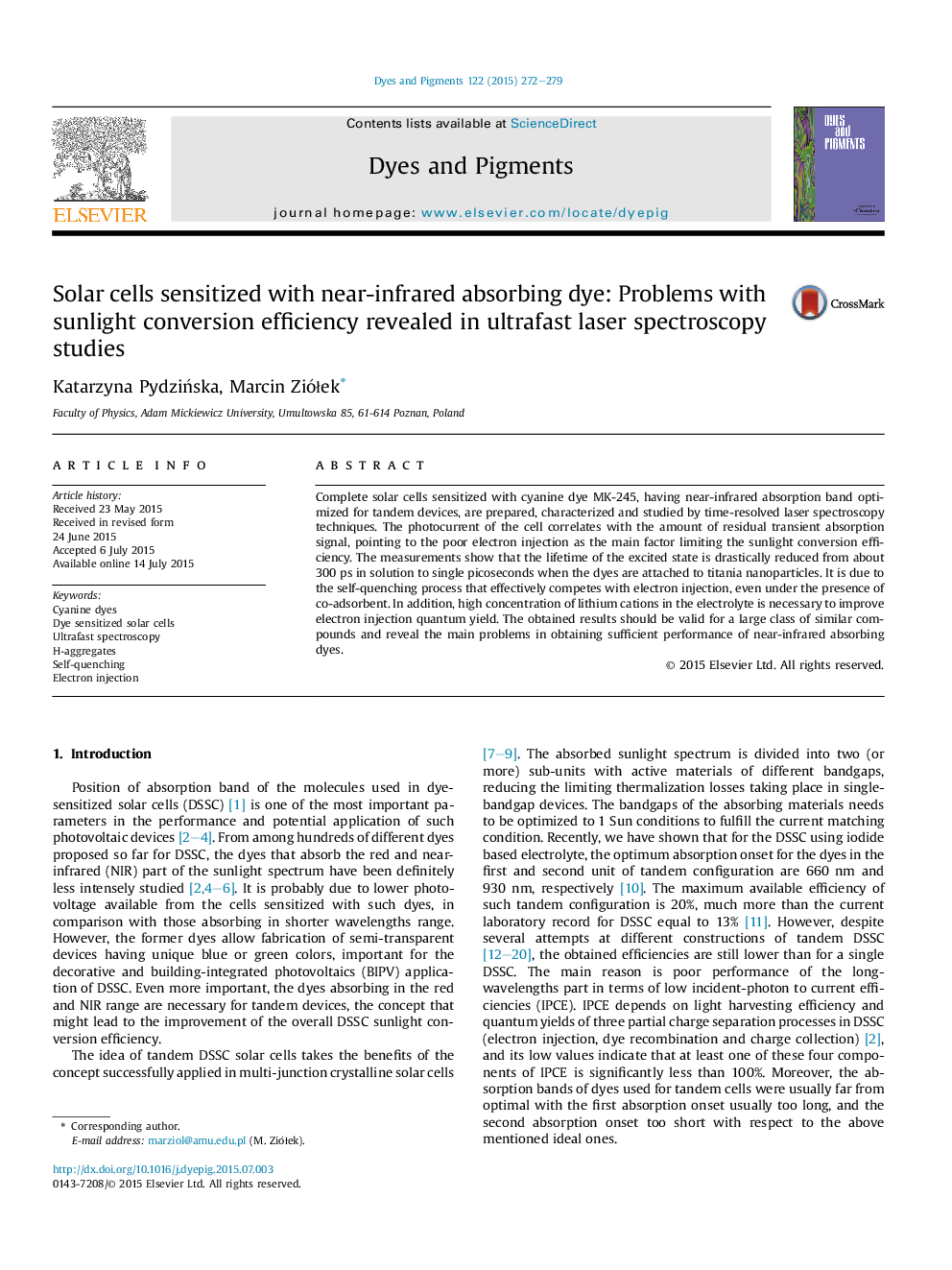| Article ID | Journal | Published Year | Pages | File Type |
|---|---|---|---|---|
| 175723 | Dyes and Pigments | 2015 | 8 Pages |
•New cyanine dye for near-infrared sensitized solar cell is presented.•Poor electron injection is the main factor limiting the sunlight conversion efficiency of this and similar dyes.•Very fast self-quenching processes on single picosecond time scale is observed.
Complete solar cells sensitized with cyanine dye MK-245, having near-infrared absorption band optimized for tandem devices, are prepared, characterized and studied by time-resolved laser spectroscopy techniques. The photocurrent of the cell correlates with the amount of residual transient absorption signal, pointing to the poor electron injection as the main factor limiting the sunlight conversion efficiency. The measurements show that the lifetime of the excited state is drastically reduced from about 300 ps in solution to single picoseconds when the dyes are attached to titania nanoparticles. It is due to the self-quenching process that effectively competes with electron injection, even under the presence of co-adsorbent. In addition, high concentration of lithium cations in the electrolyte is necessary to improve electron injection quantum yield. The obtained results should be valid for a large class of similar compounds and reveal the main problems in obtaining sufficient performance of near-infrared absorbing dyes.
Graphical abstractMK-245 dye adsorbed on titania suffers from large aggregate formation and drastic decrease of the lifetime due to self-quenching processes that lead to poor electron injection in DSSC.Figure optionsDownload full-size imageDownload as PowerPoint slide
